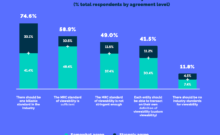Thanks to ad blockers and walled gardens, marketers have had to rethink how to win in digital and leverage “new” tactics, including digital influencers and particularly those rich in social currency: YouTubers, Instagrammers and bloggers with large followings.
Unfortunately, the rise in popularity — and earnings potential — has led to “bad actors” trying to game the system by engineering fake influencers and their audiences. Influencer fraud has become a hot topic, focusing attention on authenticity and relevance, but also creating swirl and misconceptions related to measurement and verification.
Influencer marketing is not about platform-specific spend; rather, marketers pay individuals directly to promote their brand, making it impossible to hold the platforms accountable as we do in media, for example. Furthermore, the variety of platforms, channels and post types makes it almost impossible to create common KPIs and measurements to establish benchmarks.
This has led to a plethora of new, so-called influencer verification companies. And while some of these verification companies sound like a miracle solution, there are a few things to consider:
1. Data complexity. To evaluate an influencer, we need to not only evaluate their posts and engagements, but also that of their followers and a sample of their network. A 1 million-follower influencer will generate 150 million rows, each with multiple KPIs.
Read More At The Original Article: www.mediapost.com









